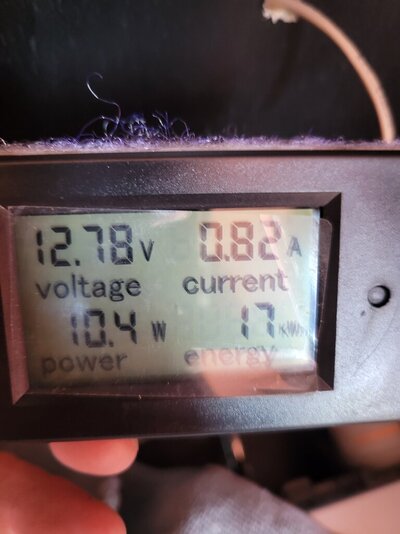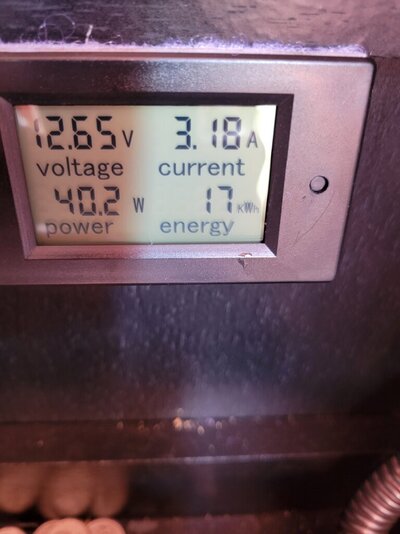Jeff in Ferndale Wa
Well-known member
I just installed two brand new 6 Volt golf cart batteries that I purchased from Les Schwab. They are 220 AH each
I installed a battery monitor that I had on my previous trailer,but never took the time to understand what it was telling me other than voltage.
I have not used the trailer yet since installation, only tested the CPAP.
Pictures of monitor attached.
First pic is resting,recently disconnected from TV after a 40 mile drive. only thing operating at the time is the fridge running on propane,and I think the onboard propane monitor.
Second pic: fridge & CPAP without humidifier
Third Pic: fridge & CPAP w humidifier.
My questions:
voltage measures voltage
current measures amp being drawn
power measures watts being drawn
what does energy measure?
How can I tell from these numbers how long my batteries will last?
I know everyone recommends not taking the voltage down more than 50%
What voltage represents 50%?
I have a 2000W portable generator. If my batteries get down to 50% how long will I have to run the generator with the trailer connected to recharge the batteries?I understand the generator is not large enough to run the AC and/or microwave. I bought it only to recharge the batteries.
I installed a battery monitor that I had on my previous trailer,but never took the time to understand what it was telling me other than voltage.
I have not used the trailer yet since installation, only tested the CPAP.
Pictures of monitor attached.
First pic is resting,recently disconnected from TV after a 40 mile drive. only thing operating at the time is the fridge running on propane,and I think the onboard propane monitor.
Second pic: fridge & CPAP without humidifier
Third Pic: fridge & CPAP w humidifier.
My questions:
voltage measures voltage
current measures amp being drawn
power measures watts being drawn
what does energy measure?
How can I tell from these numbers how long my batteries will last?
I know everyone recommends not taking the voltage down more than 50%
What voltage represents 50%?
I have a 2000W portable generator. If my batteries get down to 50% how long will I have to run the generator with the trailer connected to recharge the batteries?I understand the generator is not large enough to run the AC and/or microwave. I bought it only to recharge the batteries.



